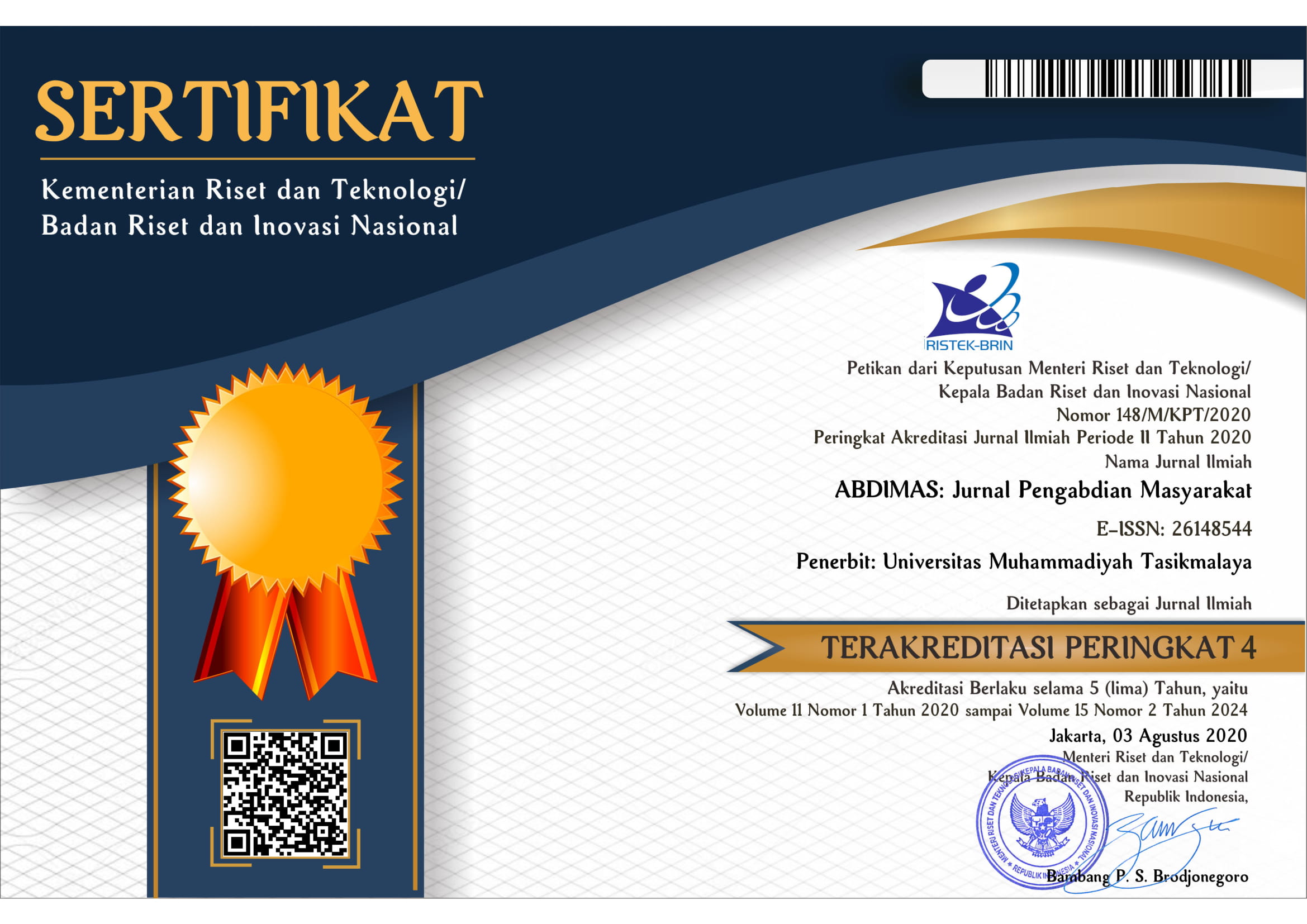Development of Integrated Organic Agricultural Agribusiness at D jamuran Pekanbaru Student Business
DOI:
https://doi.org/10.35568/abdimas.v4i2.1513Keywords:
Mushroom baglog waste, ANC worms,,fish feed, integrated agricultureAbstract
Oyster mushroom is a mushroom that is quite in demand by the people of Pekanbaru City. One of the oyster mushroom producers in Pekanbaru is a young entrepreneur named Solihin who is a student of the Department of Agrotechnology, Riau University. Oyster mushroom production ranges from 15-40 kg/day. The high production of mushrooms is supported by the number of baglogs owned by Solihin. After being used to produce mushrooms, this baglog will of course become waste. The high content of organic matter in baglog waste makes baglog waste a potential medium for the development of African Night Crawlers (ANC) worms. Furthermore, the remaining growth media for this worm can be used as vermicompost fertilizer. Therefore, the purpose of this service is to provide assistance in the cultivation of ANC worms to entrepreneurs who are partners in this service. Based on the results of the service carried out, partners have succeeded in developing by-products other than oyster mushrooms into useful and selling products which can certainly increase partners' income. In addition, partners are also developing fish farming as a continuation of the use of ANC worms as fish feed. This is because ANC worms are a high source of protein for fish feed. Through this service activity, the development of integrated agricultural agribusiness has been realized.
Downloads
References
Adinurani, Praptiningsih Gamawati, Rahayu, S. (2021). Penanganan Limbah Baglog Jamur Tiram (Pleurotus osteatus) di Desa Bodag Kecamatan Kare Kabupaten Madiun. Dinamisia: Jurnal Pengabdian Kepada Masyarakat, 5(1), 206-213.
Aziz, A. (2015). Budidaya Cacing Tanah Unggul ala Adam Cacing. Jakarta: AgroMedia Pustaka.
Bellapama, I. A., Hendarto, K., & Widyastuti, R. A. D. (2015). Pengaruh pemupukan organik limbah baglog jamur dan pemupukan takaran NPK terhadap pertumbuhan dan produksi pakchoy (Brassica chinensis L.). Jurnal Agrotek Tropika, 3(3), 327:331.
Fivintari, F. R., Wulandari, R., & Wijaya, O. (2021). Pendampingan Pengembangan Usaha Agribisnis Jamur Tiram sebagai Upaya Peningkatan Pendapatan Keluarga. Community Empowerment, 6(4), 641–648.
Irawati, D., Pradipta, N. N., & Sutapa, J. P. G. (2017). Usaha Pemanfaatan Limbah Budi Daya Jamur sebagai Bahan Baku Pembuatan Briket di Kelompok Tani Jamur Sedyo Lestari Desa Argosari, Kecamatan Sedayu, Bantul. Indonesian Journal of Community Engagement, 2(02), 175–188.
Kurniati, E. (2017). THE USEFULL OF WASTE OF MUSHROOMS FOR WORM SOIL PRODUCTION. Journal of Innovation and Applied Technology, 3(1), 429–432.
Nurwati, S. R. (2011). Pemanfaatan limbah baglog jamur sebagai media budidaya cacing Pheretima sp. Universitas Gadjah Mada. http://etd.repository.ugm.ac.id/home/detail_pencarian/51472
Qodarin, M., Rodiaminullah, Faqih, F., Firmansyah, S., Rofiqoh, R., & Anwar, K. (2021). PENDAMPINGAN PENGEMBANGBIAKAN USAHA JAMUR TIRAM MASYARAKAT DESA LONKEBUN Kerjasama dengan Yayasan Nailun Najah Desa Lonkebun Kecamatan Ketapang Kabupaten Sampang. Al-Khidmah: Jurnal Pengabdian Kepada Masyarakat, 1(2), 96–106.
Sunarjo, S., & Yuniarti, S. (2017). Pemanfaatan sayur buangan untuk pakan cacing African Night Crawler (ANC) sebagai bahan pembuat pellet. Abdimas: Jurnal Pengabdian Masyarakat Universitas Merdeka Malang, 2(1), 43-49.
Tety, E., & Cintami, Rachmawaty Sri, Yusmini, Y. (2017). Analisis Usahatani Jamur Tiram Putih (Pleurotus ostreatus) Di Kota Pekanbaru. PEKBIS (Jurnal Pendidikan Ekonomi Dan Bisnis), 9(1), 1–10.
Widodo, W., Kamardiani, D. R., & Aini, L. N. (2016). Kewirausahaan Jamur Tiram Di Pondok Pesantren. BERDIKARI: Jurnal Inovasi Dan Penerapan Ipteks, 4(1), 23–30.
Yuniarti, S., Sunarjo, S., & Sedyowati, L. (2020). Budidaya Cacing Lumbricus Rubellus dengan Media Limbah Jamur sebagai Bahan Dasar Kosmetik dan Obat-Obatan. Abdimas: Jurnal Pengabdian Masyarakat Universitas Merdeka Malang, 5(2), 93–104.














